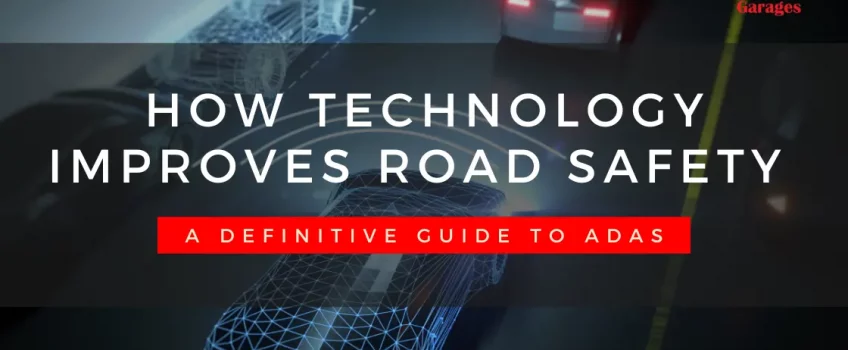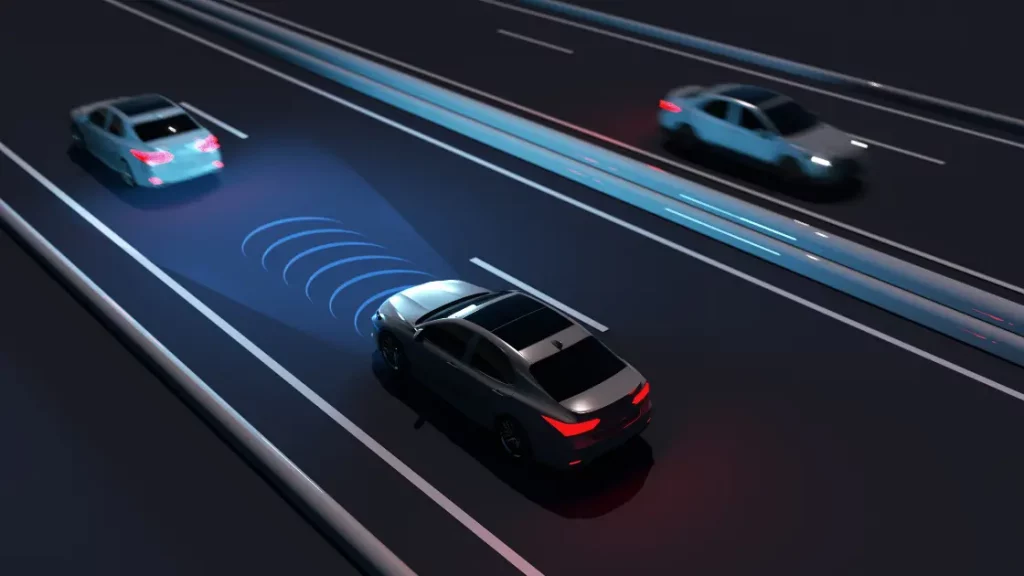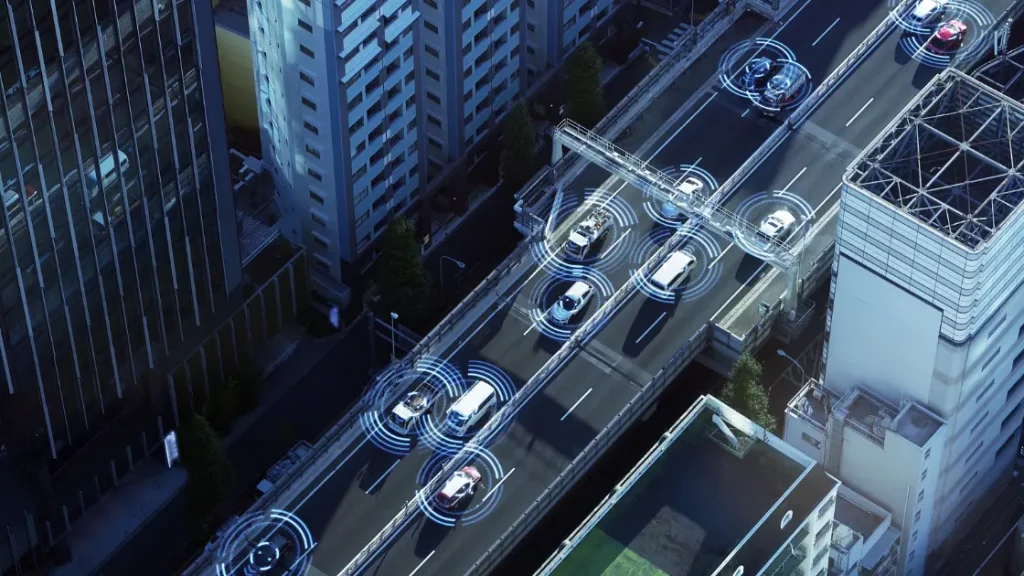
How Advanced Driver Assistance Systems Can Mitigate Road Accidents
Advanced Driver Assistance Systems (ADAS) are capable of significantly improving road safety by alerting or assisting drivers in preventing road accidents. Many of today’s most promising Advanced Driver Assistance System technologies offer various features specially designed to detect and react to potential threats. Let’s take a closer look at how ADAS works, some of its applications and vehicle autonomy.
How Do Advanced Driver Assistance Systems (ADAS) Work?
Advanced Driver Assistance Systems (ADAS) are sophisticated sensors and processing systems that use radar, lidar, cameras, and other sensors to detect objects and traffic in front of or behind the vehicle. When activated by the driver or automatically based on pre-set parameters, these systems can provide a variety of warning signals designed to help drivers respond more effectively to potential safety threats.
Features that provide information will often include a “warning” in the description. One example is if the vehicle detects another vehicle, pedestrian or cyclist where the driver may not see them, a blind spot warning or reverse warning will sound an alert to notify the driver. Another example is when the Advanced Driver Assistance system notices the vehicle drifting out of its lane, it could activate the lane departure warning to get the driver to take action, or do it automatically in some cases.
Why Is ADAS Important?
Considering that most road accidents are due to human error, ADAS has been developed to automate, adapt, and enhance vehicle technology for added safety and an enhanced driving experience. In some cases, Advanced Driver Assistance Systems could also automatically apply brakes if the driver does not respond in a safe, timely manner. Overall, ADAS has the potential to drastically improve road safety by helping drivers avoid accidents before they happen.
Based on police reports and insurance claims, many research institutions and universities around the globe are looking into how ADAS affect crash severity and frequency. Most of them reported that the right ADAS can help reduce the severity and frequency of road accidents. Some of the more essential features include lane departure warning, forward collision warning, blind spot detection and warning, and rear cross-traffic alert.
Active vs. Passive Advanced Driver Assistance Systems
The ADAS system architecture uses various sensors, interfaces, and computer processors to collect data and make informed decisions in real-time. These life-saving measures prevent accidents by constantly monitoring the environment around the vehicle and providing information to onboard computers for processing. There are essentially two types; Active and Passive safety systems and below is a simple breakdown of each.
Active ADAS Systems
With active safety systems, the vehicle takes direct action to avoid what it deems a potential collision. Active safety features in a car include:
- Automatic Emergency Braking
- Emergency Steering
- Adaptive Cruise Control
- Lane Keeping Assist and Lane Centering
- Traffic Jam Assist
- Self Parking
Passive ADAS Systems
In Passive Advanced Driver Assistance Systems, the computer only informs the driver if it detects an unsafe situation. Unlike the Active system, drivers must take action to prevent that situation from resulting in an accident. Examples of passive safety features include:
- Anti-lock Braking Systems (ABS)
- Electronic Stability Control (ESC)
- Traction Control System (TCS)
- Reverse Camera
- Lane Departure Warning (LDW)
- Forward Collision Warning (FCW)
- Blind Spot Detection
- Parking Assistance
12 Examples Of Advanced Driver Assistance Applications
As we’ve established, Advanced Driver Assistance Systems warn drivers of any potentially dangerous situations and help avoid collisions in an active or passive role. While there are many different applications, for this guide we look at 12 of the most common features.
Adaptive Cruise Control
Adaptive cruise control is one of the most common and helpful features in advanced driver assistance systems. It uses sensors to detect cars ahead of you, then operates the vehicle’s cruise control to maintain a set speed while keeping your distance. If lane departure warnings or automatic emergency braking is activated, adaptive cruise control will take action to keep you in your lane.
Blind Spot Monitoring
Blind spot monitoring warns drivers when they’re approaching another car or pedestrian in a blind spot—a danger zone where they can’t see what’s ahead of them. The system sends an alert if it detects anything within the blind spot, typically a car or pedestrian. Blind spot monitoring may be enabled by the driver, depending on the vehicle.
Lane Departure Warning
Lane departure warning systems sound an alarm if you begin to drift out of your lane—a potentially dangerous occurrence that can lead to accidents. The system uses sensors and computers to track your speed and position, then alerts you with a warning noise and flashing light in your mirror if you start to leave the lane. If self-driving is available as an option on the car, it will take over steering when you begin drifting, helping keep you safe on the road.
Automatic Emergency Braking
Automatic emergency braking helps you avoid crashes by braking automatically if you’re in danger of losing control. The system can be triggered by sensors that detect an imminent collision, or when the driver sets a threshold for how much pressure they want to apply to the brake pedal. If self-driving is available as an option on the car, it will take over steering when you begin to drift and help keep you safe on the road.
Adaptive Headlights
Adaptive headlights use sensors to adapt to changing roadway conditions, including bends or hills. This feature helps illuminate the roadway as your headlights move in relation to the direction you turn the steering wheel. By compensating for the road ahead. the Advanced Driver Assistance System can greatly help enhance night visibility.
Automated Parking Assist
Automated Parking Assist technologies include ultrasonic parking sensors on the rear and front bumpers which measure available parking spaces and detect those suitable for the car. At this point, the driver will receive an alert from where the system will take control of the accelerator, brakes, and steering of the vehicle to perform parallel, perpendicular, or angled automatic parking.
Autonomous Valet Parking
According to Bosch and Daimler, who obtained approval for their automated parking system in the Mercedes-Benz Museum parking garage in Stuttgart, automated valet parking “allows the vehicle to be left at the drop-off area of the parking garage without further ado, and all the driver needs to do is activate the smartphone app. This establishes digital contact with the parking garage, and the route to a free parking spot is computed.”
Navigation System
A navigation system uses a variety of sensors, including GPS, to provide drivers with directions. It’s a tool that aids drivers in following a route by providing on-screen instructions and voice cues so the driver can focus on the road. Some navigation systems also show exact traffic information and provide alternative routes if there is a traffic jam. More recent developments in navigation systems include a heads-up display to improve driver attention even further.
Night Vision
Night vision systems are a type of Advanced Driver Assistance System that uses sensors to detect objects and people in near-darkness. This technology can help drivers see details on the road and around corners, even in low-light conditions. There is an Active Night Vision system which projects infrared light while the Passive Night Vision system relies on the thermal energy that reflects off cars, animals and other objects.
Crosswind Stabilisation
Crosswinds are a major hazard on some UK roads and can quickly cause vehicles to veer off the road. Crosswind stabilisation systems use sensors to detect crosswinds and apply corrective steering and braking in real time. This system can limit driver error and help keep drivers on track, even in challenging conditions.
Driver Drowsiness Detection
Driver drowsiness is a major safety risk and can lead to serious road accidents. Some Advanced Driver Assistance Systems are designed to detect when a driver is drowsy and provide warning cues. Here, sensors analyse the movement of the driver’s head and heart rate to determine whether they are showing any signs of drowsiness. Other systems issue driver alerts similar to the warning signals for lane detection. Some systems include an audible warning or a message on the dashboard display.
Road-Sign Recognition
One of the most basic, but important applications of Advanced Driver Assistance Systems is road-sign recognition. This technology uses a camera to identify and interpret traffic signs, then warns the driver if they are not following the posted speed limit or if there is a school zone ahead. This information can be presented in many ways, including an audible warning, a visual notification on the instrument cluster, or a heads-up display.
Advanced Driver Assistance, V2X & Connectivity
Advanced Driver Assistance systems are constantly evolving to keep drivers safe on the roads. One area of focus is using technology to connect vehicles with other road users and infrastructure, often called V2X or Vehicle-to-Vehicle communication. This enables cars to communicate with each other about events such as accidents or construction, helping drivers stay aware of their surroundings and make more informed decisions. It supplements current methods and the mobile network to enhance situational awareness, control, or advise on speed to account for traffic congestion (traffic jams) while providing live updates to GPS maps.
Advanced Driver Assistance And Vehicle Autonomy
The development of autonomous vehicles (self-driving cars) is driven by the belief that we can improve Advanced Driver Assistance Systems to a point where they can partially or fully take over driving duties. This could bring many benefits, such as reducing traffic congestion and improving safety on the roads. However, there are also some challenges that need to be addressed before full autonomy can be realised.
For example, it is still unclear how drivers will react when they no longer have control over their vehicles. Many companies are working on developing next-gen driver assistance features to address these challenges and make autonomous driving more realistic.
What is the future of Advanced Driver Assistance Systems?
The future of ADAS systems involves providing ever-increasing levels of safety and automation, eventually leading to fully autonomous vehicles. This will require advances in computer processing power, artificial intelligence, and sensor technology. ADAS systems are constantly improving and evolving as new technologies are developed. Already, the insurance industry is seeing the benefits of these systems and offers discounts to policyholders who have them installed in their vehicles. In the coming years, we will see more and more vehicles on the road with ADAS features, and eventually, self-driving cars.
Advanced Driver Assistance Overview
From missing lane markings and traffic signs to not seeing cyclists behind you or on the sides of the car, human drivers have a lot to think about. Fortunately, ADAS systems are the perfect driver monitoring system and can greatly enhance road and vehicle safety.
However, as good as this technology may be, a human error such as driver tiredness is still among the primary causes of collisions in the UK, Europe and across the world. To ensure better control of the vehicle, drivers should always be alert and keep their hands on the steering wheel at all times. When on long journeys, take regular breaks to improve concentration levels
For more articles covering vehicle maintenance, car servicing, auto repair advice and car technology such as ADAS systems, follow our blog. If you’d like to book your service, MOT or buy new tyres, our website has everything you need, including where to find your nearest branch.
FAQs on Advanced Driver Assistance Systems
How can Advanced Driver Assistance Systems help reduce road accidents?
ADAS systems can help reduce road accidents by providing warnings to the driver about potential hazards, automatically taking corrective action in some cases, helping the driver to avoid distractions and providing information about the surrounding environment.
How effective are Advanced Driver Assistance Systems?
ADAS systems can be very effective at reducing accidents. In fact, they are becoming increasingly common in new vehicles, and many insurance companies offer discounts for vehicles that are equipped with them.
Do all cars have ADAS?
While Advanced Driver Assistance Systems are becoming increasingly common in new vehicles, it is not a standard feature.
About Us
Opening Times
Saturday : 8:30–4:00
Sunday : closed
More Information
Contact UsCustomer Information Pack
Check MOT Due Date
Free MOT reminder
Careers




